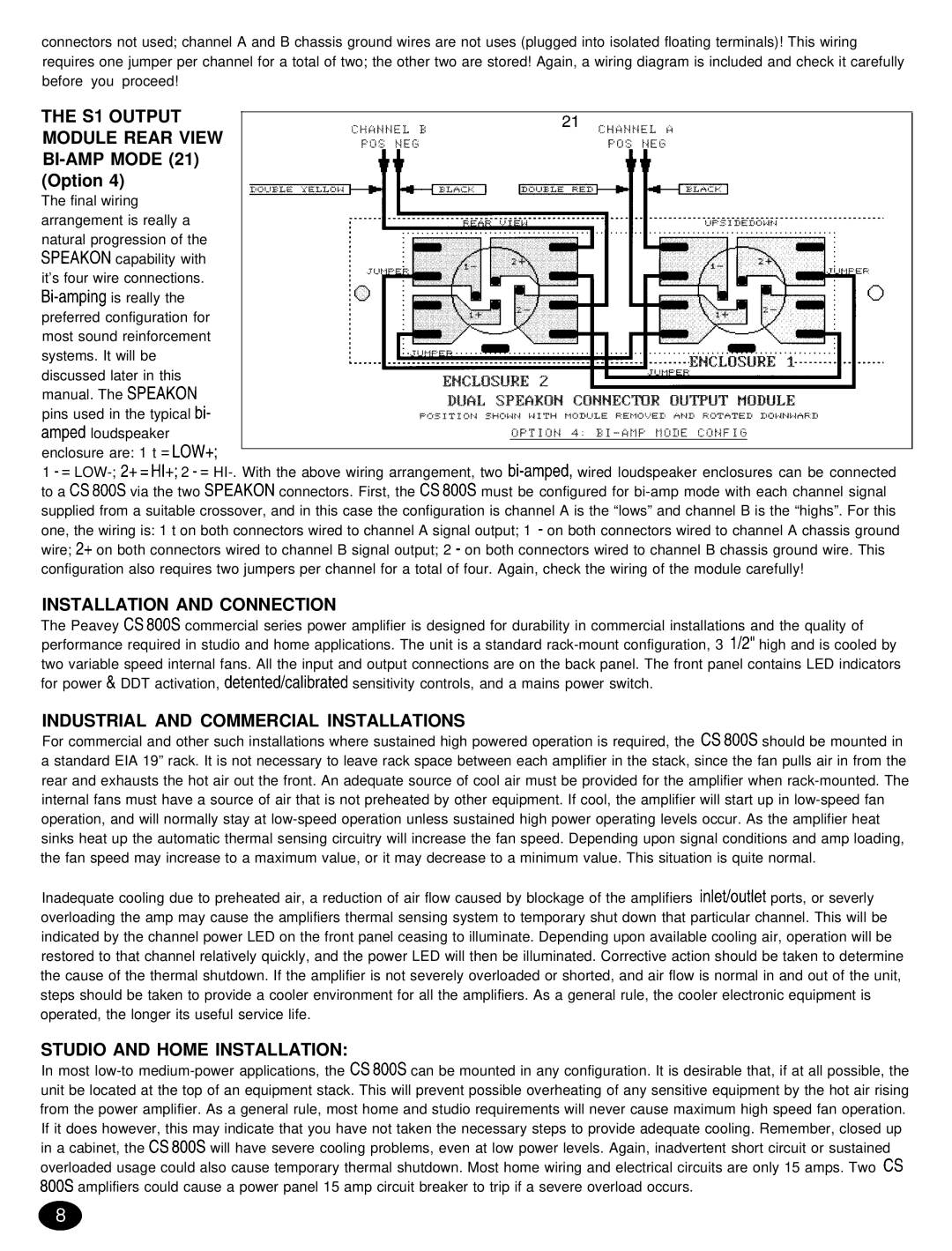CS 8OOX specifications
The Peavey CS 800X is a powerful professional amplifier designed to deliver exceptional audio performance in a wide range of applications, from live sound reinforcement to installed sound systems. This model is renowned for its reliability and versatility, making it a popular choice among audio engineers and musicians alike.One of the standout features of the CS 800X is its impressive power output. The amplifier can deliver 400 watts per channel at 4 ohms, providing ample headroom for driving speakers to their optimal performance levels. This power makes the CS 800X suitable for large venues and events, ensuring that audiences receive clear and powerful sound across the entire frequency spectrum.
In terms of technology, the CS 800X incorporates Peavey's patented DDT™ (Digital Delay Time) compression. This advanced technology helps to prevent speaker damage by controlling the input signal and minimizing distortion. DDT is particularly valuable during high-volume sessions, ensuring that the sound remains clean and undistorted even under strenuous conditions.
The construction of the CS 800X is robust and designed for durability. It features a rugged chassis that can withstand the rigors of touring or frequent use in commercial environments. The amp includes integrated cooling fans that help manage heat build-up, ensuring that the amplifier operates efficiently without overheating during extended periods of use.
Connectivity options are plentiful, with the CS 800X boasting combination XLR and 1/4-inch TRS inputs for flexible integration into various audio setups. The outputs feature Speakon connectors, providing a secure and reliable speaker connection. Additionally, the amplifier includes both biamp and stereo modes, allowing users to tailor the output to suit their specific sound needs.
The CS 800X is equipped with comprehensive protection circuitry, which includes overload protection, short circuit protection, and thermal protection. These features not only enhance the reliability of the amplifier but also ensure the longevity of connected speakers, further solidifying Peavey's commitment to quality and performance.
Overall, the Peavey CS 800X is a powerful, versatile, and reliable amplifier that delivers exceptional audio quality. Its combination of advanced technology, robust construction, and user-friendly features makes it an ideal choice for both professional sound reinforcement and installation applications. Whether for live performances, corporate events, or permanent installations, the CS 800X stands out as a dependable companion for any audio professional.

